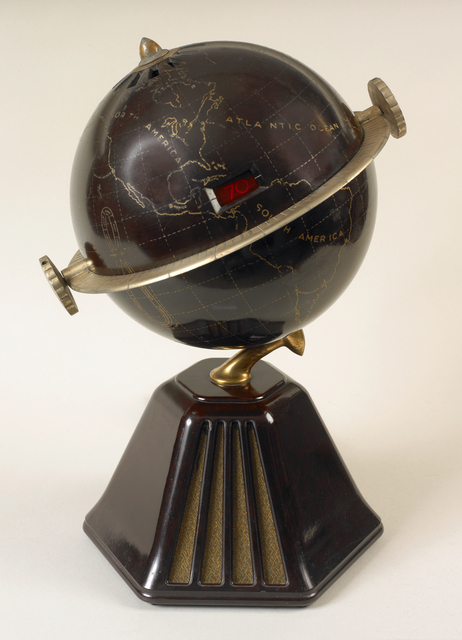Raymond Loewy was one of the most prominent industrial designers in the United States. A French émigré, he began practicing in the new field of industrial design in New York City in the 1920s. As a child growing up in Paris, Loewy witnessed developments such as the automobile and the telephone transform everyday life. These transformations had a profound effect on the designer, and later in life, when Loewy witnessed the explosive growth of broadcast radio and advances in radio technology, he would combine both his personal experiences and views of the modern world into his industrial design objects such as the New World radio for the Colonial Radio Company.
In 1933, Fortune Magazine described Colonial’s globe-shaped radio as “the latest radio success” that aligned with the “current fad for globes in gift and drug stores, yet sells in the high price range.” The radio was the union of Loewy’s technical skills as well as the use of the new material Catalin, a very hard, heat resistant phenolic plastic that could be dyed different colors, filed, ground or cut, and polished to a high sheen.
Named the “New World,” the radio depicts the seven continents, but omits individual country names. It came in three different color combinations: maroon and gold, seen here, black and gold, and ivory and gold. The ivory and gold option was considered the “top of the line.” The radio’s speaker was located in the base, and the metal ring around the center played a dual role—one as the decorative indication of the earth’s equator, and the other as the functional connector of the two metal knobs that controlled power, volume and tuning. Contemporary ads deemed the radio as “the ultimate in design,” and while its $60 price was high for Depression-era consumers, the New World radio was still a commercial success. The use of the globe form and decoration associated listening to the radio with the modern notion of connecting to the world. It also alluded to the globe as a decorative motif in historical decorative arts, like celestial globes with clockwork and Renaissance automata.
Today is National Radio Day
